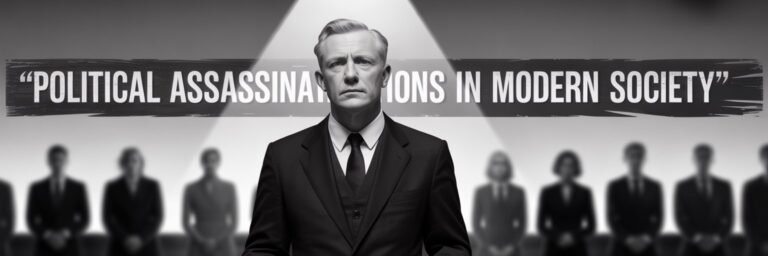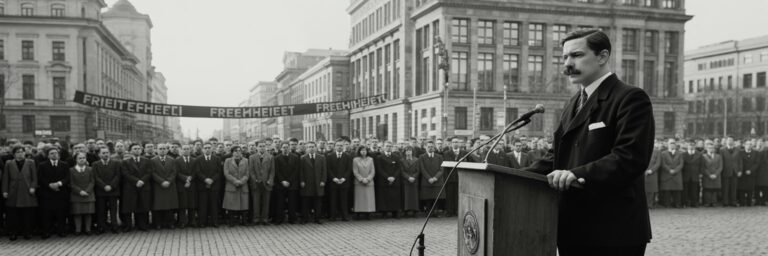INTRODUCTION
Political assassinations have occurred since the dawn of human civilization, cutting short the lives of kings, presidents, prime ministers, and activists, among others. These acts can be seen as a crude form of political expression, inciting fear and chaos while also demonstrating the ultimate vulnerability even amongst the most powerful. Both a weapon of the desperate and a strategy employed by the opportunist, political assassinations have shaped the course of human history in ways both direct and subtle. This deep-dive traverses the complex saga of political assassinations, examining key moments in history, theories, cultural significance and resent-day investigations.
HISTORICAL BACKGROUND
The origins of political assassinations can be traced back to antiquity. Julius Caesar, the powerful military general and statesman of the Roman Republic, was famously assassinated on the Ides of March, 44 BC, by members of the Senate, including his friend Brutus. This murder brought the end of the Roman Republic and the dawn of the Roman Empire.
A millennia later, Europe witnessed numerous political assassinations, such as that of Thomas Becket, Archbishop of Canterbury, in 1170. Becket’s murder at the hands of knights loyal to King Henry II of England caused a scandal that reverberated through European politics.
Fast forward to the 20th century, the assassination of Archduke Franz Ferdinand of Austria in June 1914 by Gavrilo Princip, a Bosnian Serb nationalist, triggered the catastrophic events of World War I. This case remarkably transformed global power structures and geography, determining much of the subsequent socio-political narrative.
THEORIES AND INTERPRETATIONS
Academically, political assassinations have been interpreted through various lenses – structural, psychological, and sociological. The structural interpretation propounds that assassinations are a by-product of severe political instability or polarisation, generally occurring in societies where democratic institutions are weak.
The psychological theory views these acts in terms of individual motivations, often linked to a sense of disenfranchisement or radicalisation. Assassins often see themselves as ‘political soldiers’, sacrificing personal well-being for a perceived higher cause. For example, John Wilkes Booth’s assassination of President Abraham Lincoln in 1865 had its roots in his fervent support for the Confederate cause during the American Civil War.
The sociological interpretation indulges the notion of assassinations as a societal phenomenon, a manifestation of social tension. Emile Durkheim examines political assassinations as a form of social deviance, expressing hidden societal conflicts.
MYSTERIES AND CONTROVERSIES
Political assassinations are often imbued with controversy, shrouded in mystery, and surrounded by countless conspiracy theories. The 1963 assassination of American President John F. Kennedy is one such instance. Mainstream history points to Lee Harvey Oswald as the lone gunman, an interpretation backed by the Warren Commission Report. Nevertheless, a multitude of alternative theories suggest the involvement of various entities, from the Russian government to the Mafia and even an inside job from the American Deep State.
Another controversial case is the 1948 assassination of Mahatma Gandhi. Nathuram Godse, a Hindu nationalist, was identified as Gandhi’s assassin. However, less explored theories propose the involvement of wider political or foreign elements, revealing the complexities hidden beneath this event.
SYMBOLISM AND CULTURAL SIGNIFICANCE
The act of political assassination carries profound symbolism, typically employed as a powerful method of expressing dissent. These incidences bear significant cultural impact, immortalising the victims in history. For example, Martin Luther King Jr.’s assassination in 1968 symbolised the ferocity of racial tensions in America. His death has since been echoed in cultural expressions, becoming a symbol of the Civil Rights Movement’s price.
Similarly, the assassination of Louis Mountbatten, the British statesman and naval officer, by the Irish Republican Army in 1979, represented symbolic defiance against British rule, igniting intense debates over the Northern Ireland issue. The event still reverberates in British and Irish culture.
MODERN INVESTIGATIONS
Over time, advancements in forensic sciences and investigative methods have enabled re-evaluation of historical political assassinations. The digital age has amplified these efforts, allowing archival data accessibility and promoting collaborative investigations.
One instance is the contemporary analysis of the Robert F. Kennedy assassination in 1968. Although Sirhan Sirhan was convicted as the lone perpetrator, modern investigative practices and technological advancements have questioned this conclusion, with some suggesting a second shooter theory.
LEGACY AND CONCLUSION
The legacy of political assassinations remains embedded in our collective historical memory. Such events act as stark reminders of humanity’s political struggles, recording pivotal moments that have shaped our world’s geopolitical landscape. The topic continues to provide fertile ground for historians, sociologists, and psychologists exploring the depths of human nature, power dynamics, and societal conflict.
While some assassinations are considered ‘successful’ in achieving their apparent goal of changing political landscapes, many have backfired, bringing about unexpected consequences. The death of leaders often fuels their causes, turning them into ideals rather than mere individuals. Assassinations, thus, do not extinguish ideologies; rather, they have historically strengthened them.
In conclusion, political assassinations form an indelible part of our shared past. Through continued exploration of key events, interpretations, cultural impacts, and contemporary investigations, our understanding of such instances will continue to enrich our appreciation of history and its profound influence on the present and future.






